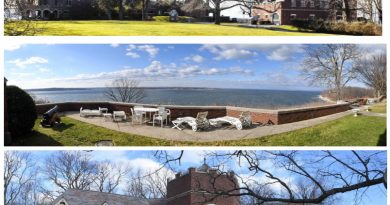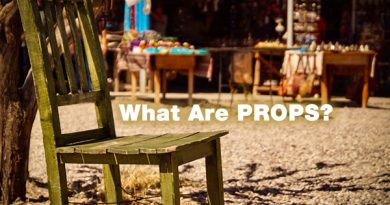The Incredible Sets for Netflix’s Dark
The Incredible Sets for Netflix’s Dark
Baron bo Odar’s critically acclaimed science fiction series Dark recently finished its third and final season on Netflix. The show’s mind-bending exploration of time travel in a small German town could read as almost anywhere, a consideration that was completely by design. Though many of the settings of Dark are actually filmed in or near Berlin, Udo Kramer, the show’s production designer explains that “the idea was to create a place that was more of a fantasy, rather than to recreate a realistic German town.” Indeed, his greatest inspiration for the show’s sets came from David Lynch’s Twin Peaks, where Kramer saw sets as backdrops that accented characters rather than taking on a life of their own.
And yet fans of the show will easily recognize some of the primary settings. The Jonas Kahnwald house where his father commits suicide to lauch the series and where much of the action of the show occurs is a large but unassuming edifice found in Berlin. The darkly wooden, Norwegian-style church where Michael meets Noah is located on the western outskirts of Berlin near Potsdam.
These real world settings add German flavor to the series and ground it in a sense of reality even as we can’t quite figure out what that reality is. But what is interesting is that if you compare photos of the real settings with scene shots from the series, it becomes clear that filters have been used to mute color and diminish brightness to suit the mood (and title) of the show.
This furthers the cause of the producer’s aim to make character identities more important than place. Perhaps this is why we often see sets that are earth shades of brown and green or that fall into gradients of black and gray. Against these backdrops, the only vivid colors we see are characters dressed to stand out.
Add to this the frequently used technique of Bokeh, or background blur, and sets seem to be amorphous seas on which the characters float, an effect that enhances the show’s sense of time fluidity. The effect is further intensified by the opening credits, which present the world kaleidoscope style, so that lives seem to operate in simultaneous moments of time that pivot around a central point (presumably the character’s perspective).
Perhaps the most interesting set piece of the series is both a real place and a completely fictional set. The cave where time travel occurs is located in the Harz region of Germany and is actually called the Unicorn Cave. But only interior cave shots were filmed here. The exterior shots and the three-door labyrinth to other times are all fictional built or CGI settings. What is fascinating is that Kramer designed the cave system after the human ear. According to the designer, he wanted it to represent equilibrium so it thus acts as the centerpiece of past, present, and future. His vision is that the cave (as an ear) “was based on the fact that this is something which can hear you.”
It’s not only these large-scale moments of setting that create the eerie award winning setting of Dark, but also the small touches. Kramer, for example, made use of onset lights to create a sense of containment. In other words, in many interior scenes, the lighting was completely accomplished by lamps included in the set rather than by additional lighting. This not only framed characters in tight dimly lit halos but also added to the titular ambiance of the show.
Lighting also became a trope for indicating the time shifts in the show and for setting mood. In the 1920s version of Winden, Kramer largely relied on simple electrical fixtures and candlelight to show Germany’s ascendancy into a more modern age. In the 1950s setting, he exercises muted shades of color and light to indicate the somber post-Nazi era. Even the contemporary setting of 2020 employs a monochromatic scale to present a cold world that perhaps forebodes the future we soon see in season 2.
If you haven’t had a chance to catch an episode of Dark, now’s the time to settle in and hang on. Though the timelines may confuse you initially, it’s a show worth giving the time to let things unravel. And if you’re a fan of design, you’ll love the interplay between real and constructed worlds, the use of color palettes, and the filming techniques that build the show’s dark world.


